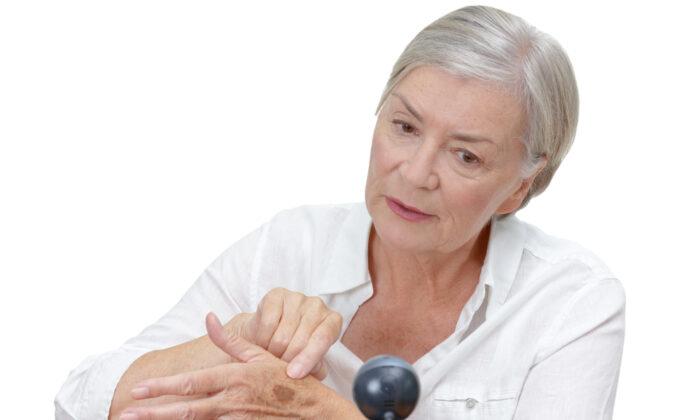Skin: it’s the body’s largest organ, and by far the most noticeable. Skin comes in an array of colors, and gives us a sense of identity and history. Our skin changes from a variety of factors, such as age, sun exposure, scarring, and hormonal shifts, just to name a few.
Beauty is said to be skin deep, but the virtues of this organ aren’t merely cosmetic. Skin is our immune system’s first line of defense, protecting the far more delicate interior organs from all manner of debris and disease.
Even more skin attributes are found just beneath the surface. They call vitamin D the sunshine vitamin, because we harvest it from UV rays. But it’s our skin that takes that light and turns it into vitamin D3.This form of D further boosts our entire immune system. It also strengthens our bones and muscles, lifts our mood, reduces inflammation, and improves heart function.
But instead of celebrating the qualities we can’t see, we often focus on the flaws-- the spots, bumps, blemishes, and imperfections that can dot our skin throughout our lives.
Some of these colorful skin marks are more welcome than others. Freckles, for example, have a touch of whimsy and playful charm Liver spots (also known as age spots or senility spots) not so much.
The names may differ, but both freckles and liver spots share several similarities. Like freckles, liver spots typically emerge where the skin is exposed to sunlight. And they’re both made of melanin: a pigment in our hair, skin, and eyes that protects these tissues from overexposure to UV light.
But where these spots differ, freckles always win hands down. Unlike freckles, liver spots don’t fade during the colder months of the year where there is far less opportunity for sun. Age is a differentiating factor too. Freckles can be found on the young. While liver spots tend to lurk on those 50 and older.
The biggest turn off, however, is the name. Liver spots. It just doesn’t sound as fun as freckles.
The liver spot moniker comes from a time when medicine was understood as a balance of humors. This tradition goes back to Hippocrates and lasted all the way up through the 19th century. In the era before CT scans and blood tests, doctors had to diagnose the internal body with observations of the external, and humoral theory provided a guide. Humors refer to the fluids of the body--such as blood, bile, and phlegm--and practitioners of humoral medicine look for imbalances in these fluids to diagnose disease. To see how liver spots were given their name, check out an article from Case Western Reserve University’s Dittrick Medical History Center that explores this humoral link.
“It gets a bit tricky now, but here’s the theory: skin is made up of molecules like oxygen, carbon, and hydrogen. When heated by the sun, the oxygen molecules become “excited” and detach from the molecules nearby. However, if the oxygen encounters a compound, like iron, for which they have greater affinity, they will bind with it and form a brownish substance, possibly an all over tan, or a sporadic freckle,” states the article. “While iron is usually found in the skin, that amount is much greater in the summer. When the liver seasonally produces excess yellow bile, the blood becomes loaded with this “brown matter” that is deposited in the skin, awaiting the sun’s rays.”
Vestiges of humoral theory were mostly abandoned with the advance of modern medicine in the 20th century., and the liver spot name is considered an enduring relic from a bygone era. Although conventional Western doctors no longer recognize the liver playing any role in the formation of liver spots, practitioners of traditional Chinese medicine (TCM) still see a connection.
Maybe that’s because Chinese medicine sees the human body differently than Western medicine does. For example, the Chinese approach has the liver possessing a variety of features and characteristics that you won’t find in the biomedical understanding of this organ.
According to acupuncturist Dr. Lia Andrews, most cases of “hyperpigmentation (which includes both freckles and liver spots) are a result of a “Liver imbalance.” In an article on treating skin issues, Andrews explains how imbalances of the liver in Chinese medicine are intimately tied to hormonal cycles. This is why women who suffer from menstrual, postpartum, or menopause issues may see liver spots appear.
“Hyperpigmentation is the result of two things: 1) the excess production of melanin and 2) the body’s inefficiency to break up the melanin clusters and eliminate them,” Andrews writes. “Inflammation caused by hormonal imbalances or acne are also a major trigger for excess melanin production.”
Andrews lists a number of products and procedures to promote hormonal balance, microcirculation, and lymphatic functioning, with the goal of treating or preventing liver spots. But most liver spot remedies take a more surface approach. The general aim of these topical products is to lighten the marks, and give the appearance of unblemished skin.
But removing liver spots in this fashion does nothing to improve your health, and may lead to other problems.. Dermatologists say liver spots are harmless, and some of the techniques used to erase liver spots can result in genuine skin damage, such as in inflammation and flaking.
Avoiding the sun is perhaps the most reliable method to prevent the formation of liver spots, but this means you also miss out on manufacturing your own in-house production of vitamin D3. Supplements are available for those who choose this path.
Another option is simply to embrace your liver spots. To be comfortable in your skin, is to be confident in who you are. If it’s the name upsets you, just try rebranding them. How about wisdom freckles







Friends Read Free